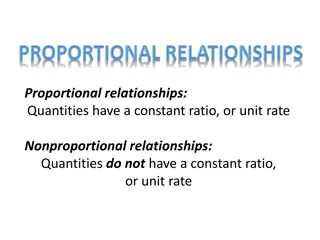Understanding Family Relationships and Types in Social Studies Class
Exploring Family Relationships in Social Studies Class: Learn about the importance of family bonds, household chores, passing on values, and different types of families like nuclear and joint families. Understand the differences between them and their impact on responsibility, care, and social interactions.
Download Presentation

Please find below an Image/Link to download the presentation.
The content on the website is provided AS IS for your information and personal use only. It may not be sold, licensed, or shared on other websites without obtaining consent from the author. Download presentation by click this link. If you encounter any issues during the download, it is possible that the publisher has removed the file from their server.
E N D
Presentation Transcript
Social Studies ( Std:- IV)
Lession -1 Family Relationships A family constitutes people who are related to each other and share an emotional bond and similar values. Family members can be related by birth, marriage, or adoption. ... And your extended family includes people you are related to, such as grandparents, cousins, aunts & uncles, nephews, nieces etc.
Family A family consists of married couple and their children both natural and adopted.
Family surname Family members share a common residence and surname.
The family members share the household chores. The sharing reduces the burden on any one family member and encourages responsibility .
The children learn good behavior, moral values and skills by watching the members of the family. The older family members automatically pass on values and family traditions to the younger generation.
Types of family A nuclear family:- An elementary family or conjugal family is a family group consisting of two parents and their children. A Joint family :- It consists of grandparents, father, mother, uncles , aunts and cousins. All are living nearby or in a same household.
Differences between Nuclear and Joint family. Nuclear Family Joint Family Least number of member. More number of member. More responsibility Less responsibility Full care of members Love , care and moral support are seen. There is greater interaction among the parents and their children. Children learn cooperation and living in harmony with members in a family.
Conclusion Nuclear or Joint families both have benefits or problems. They both have their own advantages and disadvantages. It is a matter of personal choice and also depends on time and environments. a newly married couple would prefer nuclear family but can move back with parents and siblings when become parents themselves.























